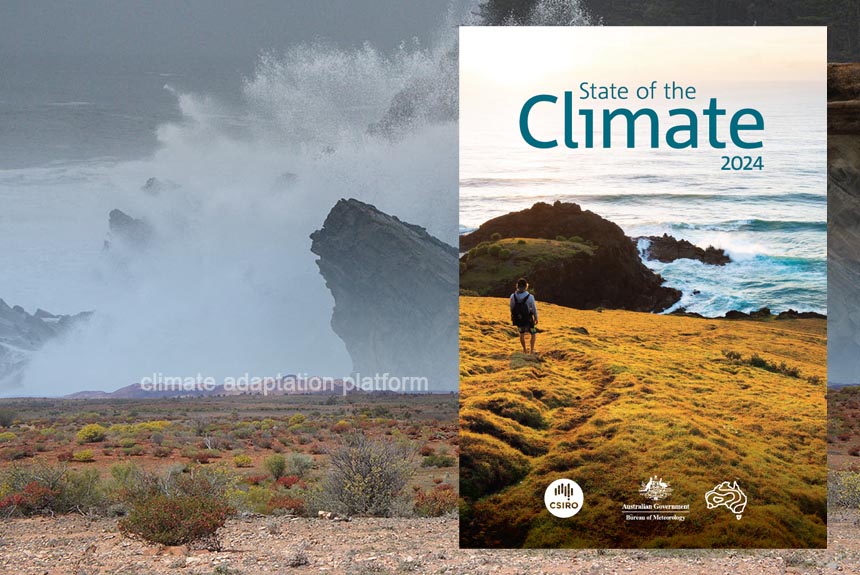The latest report prepared by scientists and meteorologists from CSIRO and the Bureau of Meteorology shows that Australia has warmed by an average of 1.51°C since 1910, and its oceans have heated up by 1.08°C on average since 1900.
The Paris Agreement warns the world to avoid this temperature rise, which it considers the temperature threshold that, when reached or exceeded, could risk unleashing far more severe climate change impacts, including more severe and frequent rainfalls, droughts, and heatwaves.
The State of the Climate Report 2024, released on 31 October 2024, is prepared every two years and draws on the latest national and international climate research, monitoring, and projection information to describe changes and long-term trends in Australia’s climate. It is aimed to inform economic, environmental, and social decision-making by governments, industries, and communities.

Key points from the State of the Climate 2024 report:
- Australia’s climate has warmed by an average of 1.51 ± 0.23 °C since national records began in 1910.
- Sea surface temperatures have increased by an average of 1.08 °C since 1900.
- The warming has increased the frequency of extreme heat events over land and in the oceans.
- In southwest Australia, rainfall has decreased by around 16% from April to October since 1970. Across the same region, rainfall from May to July has seen the largest reduction, around 20% since 1970.
- In southeast Australia, rainfall has decreased by around 9% from April to October since 1994.
- Heavy short-term rainfall events are becoming more intense.
- There has been a decrease in streamflow at most gauges across Australia since 1970.
- There has been an increase in rainfall and streamflow across parts of northern Australia since the 1970s.
- Since the 1950s, extreme fire weather and a longer fire season have increased across large parts of the country. The number of tropical cyclones observed in the Australian region has decreased since at least 1982.
- Snow depth, snow cover and snow days have decreased in alpine regions since the late 1950s.
- Oceans around Australia are becoming more acidic, with changes happening faster in recent decades.
- Sea levels are rising around Australia, including more frequent extreme high levels that increase the risk of inundation and damage to coastal infrastructure and communities.
Projection of future climate
The report outlines the expected changes in Australia’s climate over the next few decades. It indicates a steady rise in air temperatures and a reduction in cool season rainfall across numerous areas. We can expect more intense short bursts of heavy rain, increased hazardous fire weather days, and an extended fire season in southern and eastern Australia.
Additionally, sea levels are predicted to rise further, leading to greater acidification and longer and more intense marine heat waves. Cyclones may become less frequent but stronger, and snow depths in alpine regions are expected to diminish.
The report notes that these changes will impact the lives and livelihoods of all Australians. Warming has increased extreme fire weather and longer fire seasons across the country. In contrast, lower rainfall in the cooler months leads to lower average streamflow in those regions, decreasing soil moisture and water storage levels and increasing drought risk. The report calls on the country to adapt to these climate risks. The severity of climate change impacts will also depend on how fast the world can slash its GHG emissions.
Read the report through the link in the “Source” section below.
Source:
State of the Climate 2024. (2024, 31 October). CSIRO. Retrieved. https://www.preventionweb.net/media/102141/download?startDownload=20241105



Leave a Reply